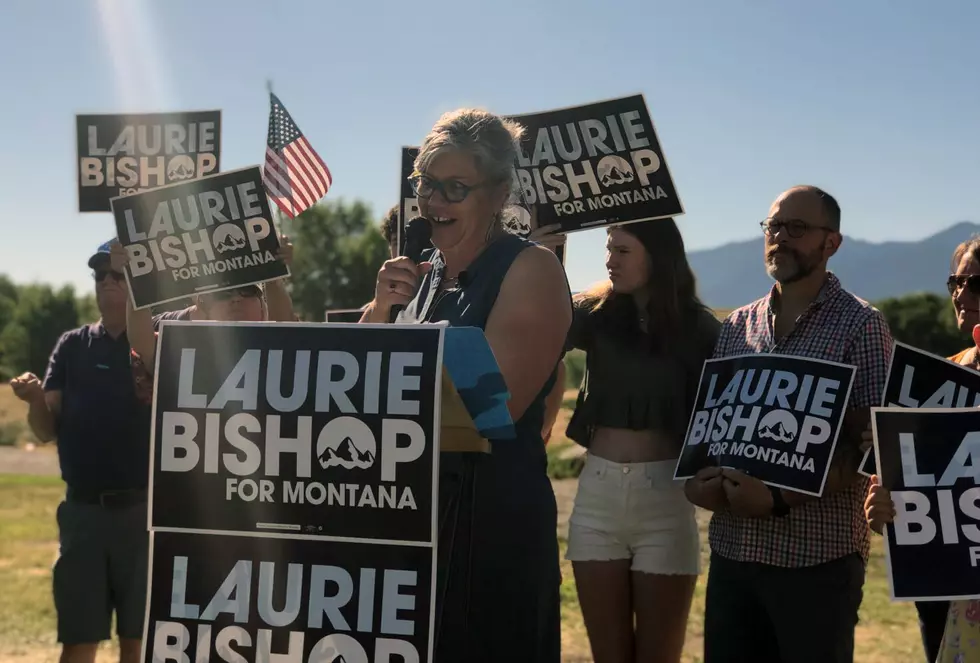
Livingston Democrat Laurie Bishop launches congressional bid
(Daily Montanan) - State Rep. Laurie Bishop announced her candidacy for Montana’s newly created congressional district on Thursday, making her the first Democrat to formally enter the field at a unique moment in the state’s political history.
For the first time in decades, two lawmakers will represent Montana in Congress’ lower chamber, a function of rapid population growth measured in the most recent decennial census. Bishop, who’s served three terms in the state House — most recently as a minority whip — hopes to be one of those two, though state officials have yet to determine exactly how those districts will be shaped or along what line they’ll be divided.
“There is a reason we are gaining this second seat — people want to live here,” Bishop said at a campaign launch event in Livingston, her long-time adopted home. “But too many Montanans are finding that the obstacles that they need to overcome to stay here have gotten larger. These challenges have only been amplified as we’ve felt the shared impacts of the pandemic.”
Bishop is the director of the nonprofit Montana Afterschool Alliance and said she’s centering her campaign on key issues of livability in Montana like childcare and housing affordability. She also pledged to strengthen mental and behavioral healthcare, fight to make permanent the expanded Child Tax Credit under the American Rescue Plan Act and echoed longstanding promises among Montana politicians of all stripes to protect and preserve public lands.
She said she’s seen these issues manifest first-hand in Livingston, where the housing crisis in Gallatin County has spilled over but where wages still remain comparatively low.
“Even before the pandemic, Livingston was in a position where trying to attract the workforce we needed…was really challenging because we could not find them housing,” she said later on Thursday. “Since the pandemic, that has blown up on a scale that no one could have predicted.”
Addressing this at the congressional level requires bringing the perspective of a rural community to Washington and ensuring that federal grantmaking and investment are targeted and adapted for states like Montana, she said.
“There’s a real disconnect between the way federal programs are designed and the way rural communities actually work,” she added.
She touted experience working in the Democratic legislative minority to protect and extend Medicaid expansion, fund infrastructure development and ensure parity in insurance coverage for mental healthcare.
The last session, the first in 16 years with a Republican governor, came with a different set of lessons, she said.
“The strength of our leadership over the last two terms is really reflected in the fact that we were holding our caucus together in key moments,” Bishop said.
Though Bishop is the first Democrat to declare for the race, she’s not the first candidate. Ryan Zinke, a Republican who formerly represented Montana’s then at-large district and went on to serve as Secretary of the Interior under President Donald Trump, has also announced his candidacy for what will be Montana’s First Congressional District. And shortly after Bishop’s announcement, Kalispell’s Dr. Al Olszewski, a Republican who previously served in the state legislature and mounted unsuccessful runs for U.S. Senate and governor, announced that he would run as well.
All who enter the fray at this stage in the race are in something of an awkward position: While it’s widely assumed that the state congressional map will share the east-west divide of the old days, where the line will bisect the state isn’t yet clear.
Bishop acknowledged there’s a chance that once the Montana Districting and Apportionment Commission finishes its work, Livingston might end up in the eastern plains district, which historically has trended toward the right, but nonetheless said she’ll be running in the western district. In fact, she said she was planning on mounting a Congressional run even before the new district was announced.
If Bishop wins, she’ll be the first Democrat to represent Montana in Congress since 1997, when Pat Williams retired.
“This is an opportunity for us to bring our representation in D.C. into much more of the balance that actually exists in our state,” she said.
